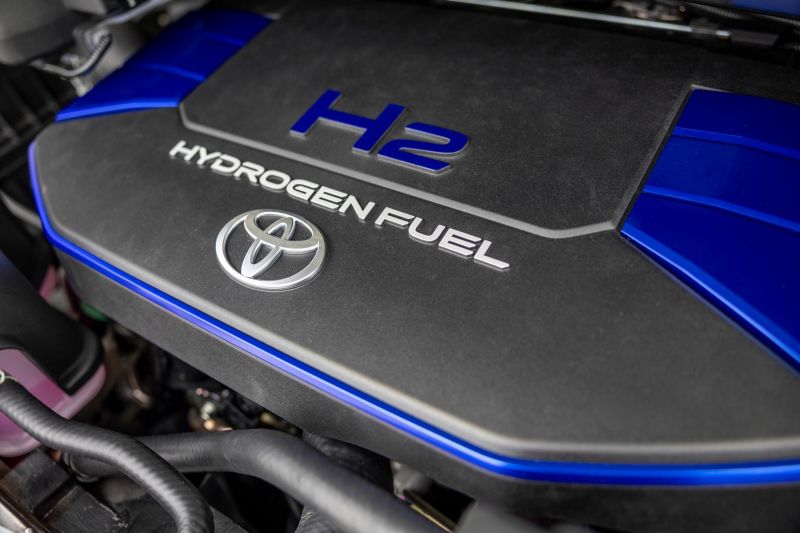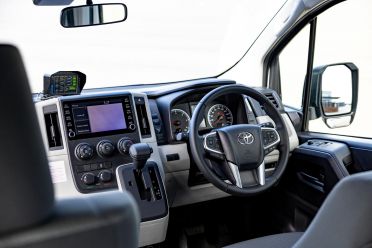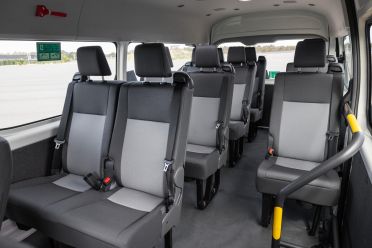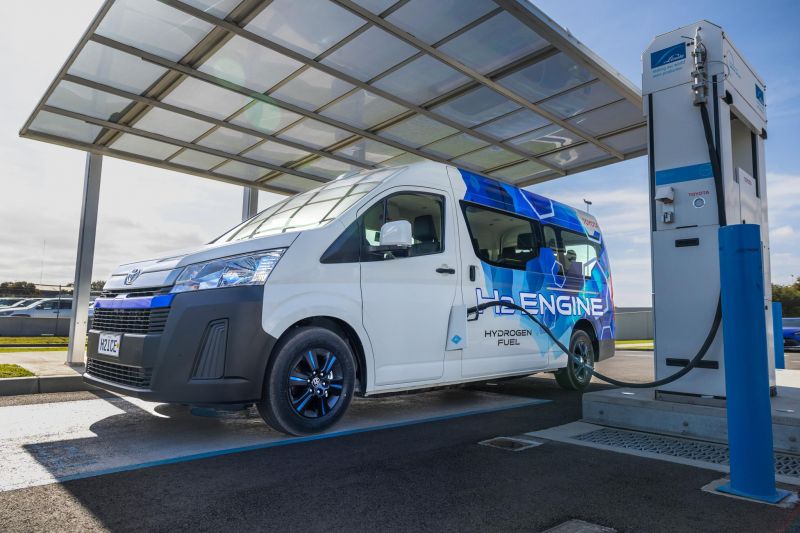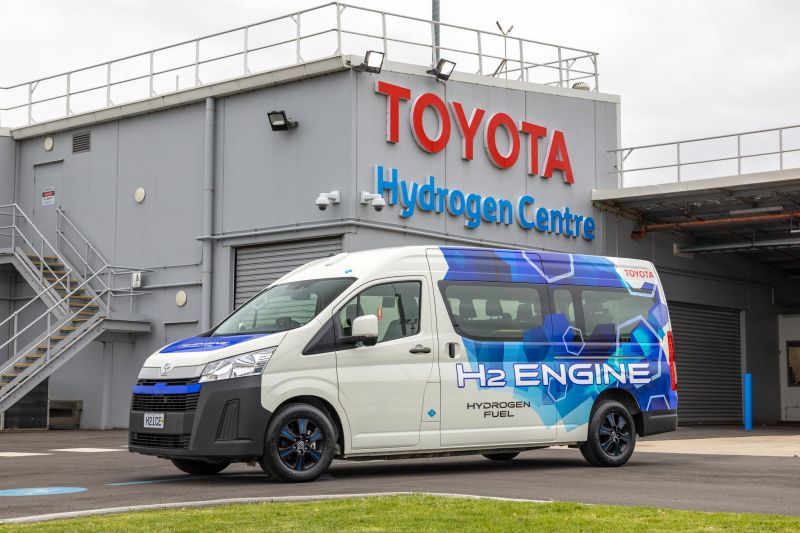Toyota has unveiled a prototype version of its HiAce van with a hydrogen-fuelled internal-combustion engine (ICE) in Australia.
The Japanese carmaker only showed off this hydrogen HiAce prototype in 12-seat Commuter form, though Toyota confirmed the technology could also be used in a load-carrying HiAce van.
Unlike the regular HiAce sold in Australia, which is currently only powered by a 2.8-litre four-cylinder turbo-diesel, this hydrogen prototype is powered by a 3.4-litre twin-turbo V6 engine modified to run on hydrogen instead of petrol.
This engine is currently used with petrol in the Lexus LX 600 in Australia, as well as the Toyota LandCruiser 300 Series in other markets.
Toyota claims the one of the few modifications made to the engine are the injectors, which allow it to run on compressed hydrogen gas.
The hydrogen-fuelled V6 engine in the HiAce prototype produces 120kW of power and 354Nm of torque. This is 185kW and 296Nm less than its petrol-fuelled counterpart.
Drive is sent to the rear wheels only through a 10-speed automatic transmission.
The internal combustion engine is fed by three hydrogen fuel tanks similar to the ones used in the current Mirai hydrogen fuel-cell electric vehicle (FCEV). The Mirai has a hydrogen capacity of 5.6kg.
Toyota claims the Hydrogen HiAce prototype has a range of around 200km. For context, the Mirai has a NEDC claimed range of 650km.
This theoretically means the Hydrogen HiAce prototype consumes three times the amount of hydrogen the Mirai does when driving.
Few other technical details are known about the Hydrogen HiAce prototype at this stage, though it does have a 1500kg towing capacity and “minimal impact” on payload and internal space.
Toyota claims it’s already working on increasing the size of the hydrogen storage tanks and improving combustion, as well as exploring the possibility of adding hybrid technology.
This Hydrogen HiAce prototype marks the first time Toyota has used hydrogen combustion technology on an engine with more than three cylinders.
The Japanese carmaker has been developing this technology for motorsport with a modified GR Yaris 1.6-litre turbocharged three-cylinder engine. It has also put this hydrogen-powered three-cylinder engine into a regular Corolla Cross SUV.
Toyota claims the HiAce was selected as the pilot vehicle to test this new hydrogen-fuelled due to two mains reasons.
The commercial van offers the opportunity to fit the internal combustion engine up front and the three hydrogen fuel tanks under the floor.
The Japanese carmaker also claims it’s the type of vehicle that’s used for “short ‘back to base’ commercial operations”.
Seven examples of these hydrogen-powered HiAce prototypes will be available to Australian fleet customers later this month as part of a pilot program.
The first company to test out the Hydrogen HiAce prototypes will be CPB Contractors, which is one of Australia’s leading designers and builders of large-scale infrastructure.
CPB Contractors will use the Commuter version of the HiAce to transport workers from around project sites in Melbourne.
At this stage it’s unclear when Toyota intends to actually put a hydrogen-powered HiAce into production, though Yamagata-san said “we’d like to provide this product as soon as possible”.
Development of the Hydrogen HiAce prototype was fast-tracked, according to Yamagata-san, with it taking around three years.
MORE: Everything Toyota HiAce

